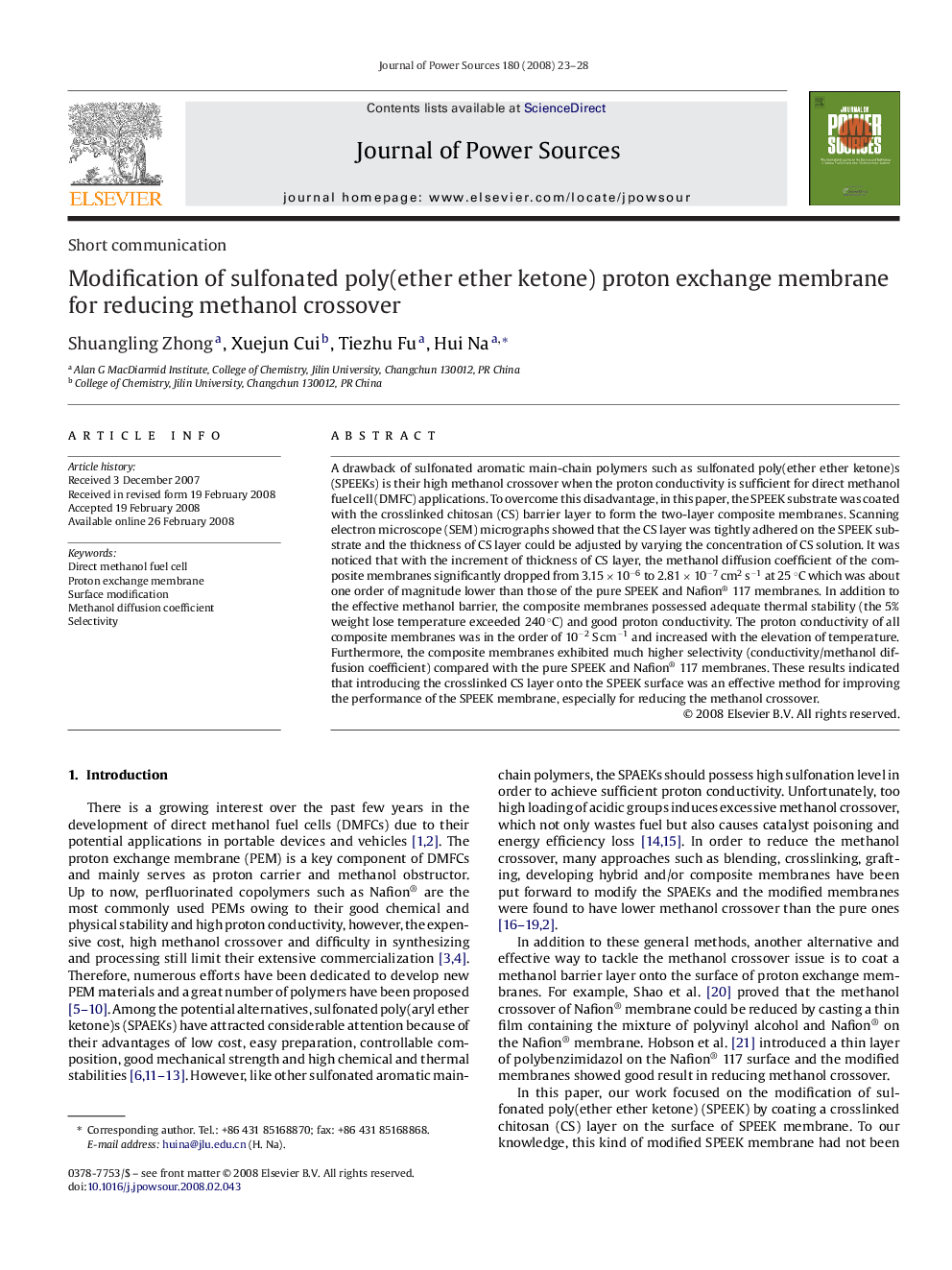| Article ID | Journal | Published Year | Pages | File Type |
|---|---|---|---|---|
| 1290540 | Journal of Power Sources | 2008 | 6 Pages |
A drawback of sulfonated aromatic main-chain polymers such as sulfonated poly(ether ether ketone)s (SPEEKs) is their high methanol crossover when the proton conductivity is sufficient for direct methanol fuel cell (DMFC) applications. To overcome this disadvantage, in this paper, the SPEEK substrate was coated with the crosslinked chitosan (CS) barrier layer to form the two-layer composite membranes. Scanning electron microscope (SEM) micrographs showed that the CS layer was tightly adhered on the SPEEK substrate and the thickness of CS layer could be adjusted by varying the concentration of CS solution. It was noticed that with the increment of thickness of CS layer, the methanol diffusion coefficient of the composite membranes significantly dropped from 3.15 × 10−6 to 2.81 × 10−7 cm2 s−1 at 25 °C which was about one order of magnitude lower than those of the pure SPEEK and Nafion® 117 membranes. In addition to the effective methanol barrier, the composite membranes possessed adequate thermal stability (the 5% weight lose temperature exceeded 240 °C) and good proton conductivity. The proton conductivity of all composite membranes was in the order of 10−2 S cm−1 and increased with the elevation of temperature. Furthermore, the composite membranes exhibited much higher selectivity (conductivity/methanol diffusion coefficient) compared with the pure SPEEK and Nafion® 117 membranes. These results indicated that introducing the crosslinked CS layer onto the SPEEK surface was an effective method for improving the performance of the SPEEK membrane, especially for reducing the methanol crossover.
